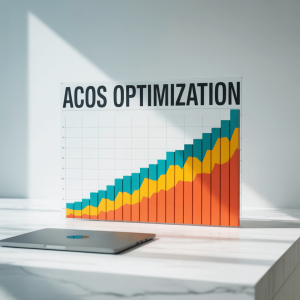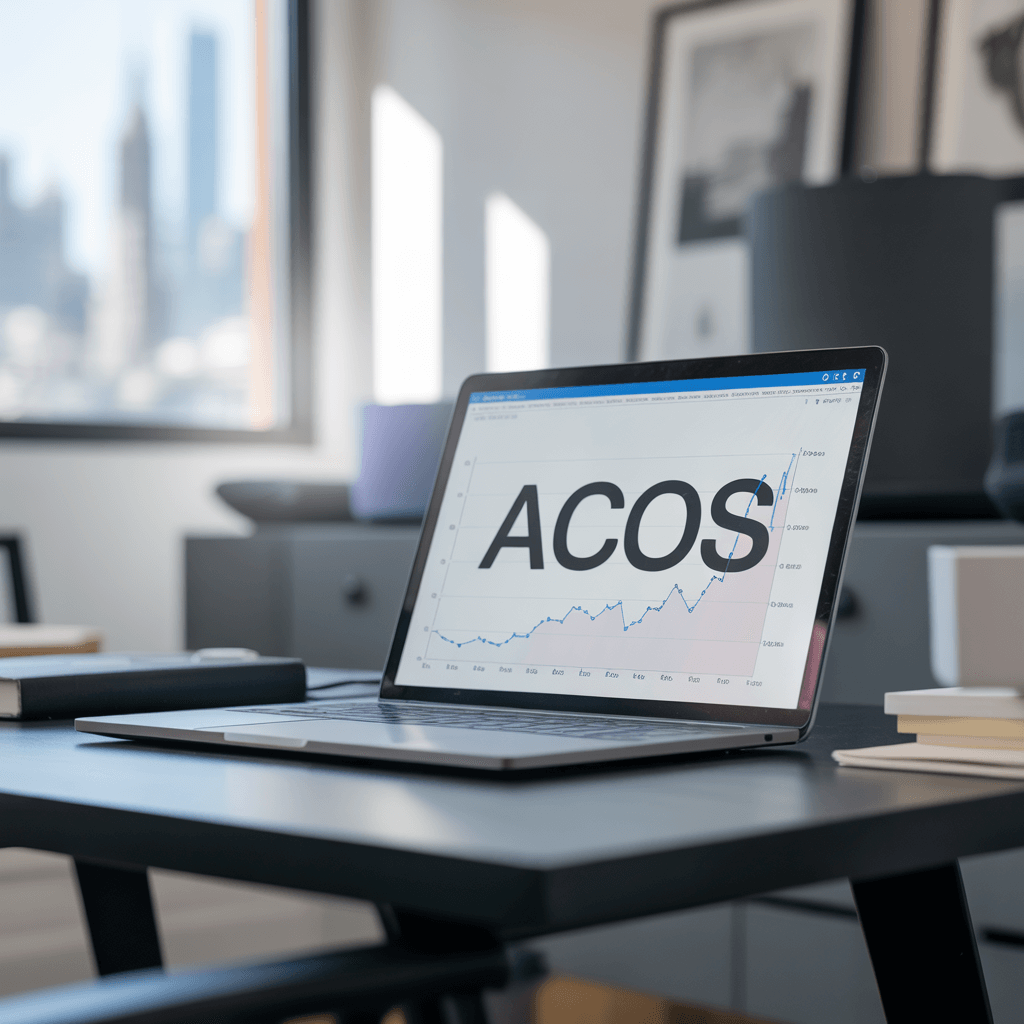If your Amazon Ads aren’t making you money, they’re probably costing you more than you think and ACoS is the silent number calling the shots.
While many sellers obsess over impressions, clicks, or CPCs, there’s a single, brutally honest metric that holds the real truth about your ad performance: Amazon ACoS.
A good ACoS means you’re on track. A bad one? You’re bleeding budget, often without realizing it. And here’s the kicker: most brands don’t even know how to calculate it, let alone optimize it.
Let’s break down what Amazon ACoS really is, how it impacts your Amazon ad campaigns, and how to turn it into your most reliable profitability compass.
What Is Amazon ACoS and Why It Rules the Ad Game
ACoS: The Profit Efficiency Meter
Amazon ACoS (Advertising Cost of Sales) is a percentage that shows how much you’re spending on ads to generate a dollar of revenue. In simple terms:
ACoS = (Ad Spend / Ad Revenue) × 100
Spend $100 to make $500 in sales? That’s a 20% ACoS. Spend $300 to make the same? That’s 60%, a red flag.
Why ACoS Matters More Than Clicks or CPCs
Amazon ACoS doesn’t care how many clicks you get. It only tells you one thing: is your Amazon advertising strategy actually making money, or just eating up your margins?
It cuts through vanity metrics and brings profit clarity front and center.
Breaking Down the Variables That Drive Your Amazon ACoS
Product Type Impacts ACoS More Than You Think
Your product is a major factor in ad performance. Niche or premium products with a loyal audience tend to have lower ACoS, as less persuasion (and thus, less budget) is required to convert.
But if you’re in a saturated market selling generic goods, expect higher bids, stiffer competition, and a higher ACoS.
Keyword Relevance = Budget Efficiency
Want to lower your Amazon ACoS fast? Audit your keywords.
Broad, short-tail keywords like “coffee mug” are competitive and expensive. They drain budgets and usually come with a high ACoS.
Shift to long-tail keywords like “eco-friendly ceramic coffee mug with lid”, lower CPCs, more qualified traffic, and a healthier ACoS.
Bidding Strategy Directly Shapes ACoS
Aggressive bidding without proper segmentation is the quickest path to ACoS disaster. If you’re not tailoring bids by product performance or profit margins, you’re paying too much for results you might not even need.
Use Amazon PPC tools to segment bids, pull historical data, and scale what’s working. This keeps your ACoS under control while still growing visibility.
ROAS vs. ACoS: Which Should You Trust?
Both Matter, But Know What You’re Tracking
ROAS (Return on Ad Spend) is just the inverse of ACoS. The formulas are different, but the story is the same.
ACoS = Ad Spend / Ad Revenue
ROAS = Ad Revenue / Ad Spend
Use ACoS if you’re optimizing for cost control. Use ROAS if you’re aiming to maximize returns. But don’t treat them like separate metrics, they’re two lenses of the same advertising reality.
Discovering Your Break-Even and Target Amazon ACoS
Break-Even ACoS Keeps You From Losing Money
Break-even ACoS = Your profit margin. If your product earns a 30% margin after fees and costs, that’s your limit. Any ACoS above 30% means you’re losing money on every sale.
Target ACoS Is Where Real Profit Lives
Set your target Amazon ACoS below your break-even point to build real profit into every ad click. If your profit margin is 30% and you want to net 10% per sale, your target ACoS is 20%.
Optimizing for target ACoS transforms your campaigns from just “not losing money” into consistent profit machines.
What’s a Good Amazon ACoS for You?
There is no universal “ideal” ACoS but here’s how it should align with your goals:
- Launching a new product? A higher ACoS is fine to gain visibility.
- Scaling an established product? Aim for below your break-even ACoS.
- Maximizing profit? Stay close to or under your target ACoS consistently.
For a deeper look at why campaigns might underperform, check out this eye-opening blog: 11 Reasons Why Your Amazon Ad Campaigns Are Not Working
Understanding TACoS: The Total Picture
Going Beyond Ad Revenue
Amazon TACoS (Total Advertising Cost of Sales) adds your organic sales to the equation.
TACoS = (Ad Spend / Total Sales) × 100
If you spent $1,000 on ads, generated $2,000 in ad sales and $4,000 in organic sales, your ACoS would be 50%, but your TACoS is only 16.6%. That’s a healthier, more scalable reality.
TACoS is especially helpful when assessing long-term growth and brand strength.

Advanced Amazon Advertising Strategies to Optimize ACoS
1. Prioritize High-Performing ASINs
Dumping budget into underperforming products is a surefire way to spike your ACoS. Use Amazon Marketing Stream data to focus your ad spend on top ASINs with high CTR and CVR.
2. Harvest Keywords from Auto Campaigns
Run auto campaigns to uncover search term gold. Then migrate those high-converting keywords into manual campaigns where you control the match type and bidding.
This keyword refinement alone can bring down ACoS significantly over time.
3. Add Negative Keywords to Cut Waste
If you’re not excluding poor-performing keywords, you’re leaving money on the table. Analyze clicks with no conversions and flag those as negatives. This stops your ads from appearing in irrelevant searches and protects your ACoS.
How to Use an Amazon ACoS Calculator the Right Way
Plug in Real Numbers, Not Estimates
Too many sellers make one critical mistake, they base ACoS on assumptions instead of hard data. The Amazon ACoS calculator works only if you feed it real numbers:
- Actual ad spend (not projected)
- Real revenue generated by ads
- Exact product costs (including FBA fees, packaging, etc.)
The clearer your inputs, the more actionable your ACoS insights become. Don’t just calculate; calibrate.
Automate to Scale
Manual ACoS calculations are fine when you’re running one or two campaigns. But if you’re managing multiple Amazon PPC efforts across dozens of SKUs, automation becomes non-negotiable.
Use campaign management tools with built-in ACoS calculators and alerts. Set thresholds so you’re notified when ACoS crosses profitable (or dangerous) limits. This keeps performance scalable without constant spreadsheet juggling.
Optimizing Amazon Advertising Campaigns for Lower ACoS
Build Campaigns Around Buy-Ready Customers
Not all traffic is created equal. If your Amazon Ads are attracting window-shoppers, you’re wasting spend. Shift your Amazon advertising strategy to target transactional intent.
Use keyword modifiers like:
- “Buy”
- “Best [product type]”
- “Deals on [brand name]”
These signals often lead to higher conversion rates and a lower Amazon ACoS.
Dayparting via Amazon Marketing Stream
Did you know most ad budgets get burned during non-converting hours?
With Amazon Marketing Stream, you can track hourly ad performance and identify when your customers actually buy. Use that insight to run ads only during high-converting windows, dramatically improving your ACoS.
Example: If your coffee accessories convert best between 7 AM–11 AM, why waste budget running ads at midnight?
Segment by Ad Type: Sponsored Products vs. Brands
Each ad type on Amazon behaves differently:
- Sponsored Products: Typically lower ACoS, high conversion
- Sponsored Brands: Better for awareness, but usually higher ACoS
- Sponsored Display: Great for retargeting, moderate ACoS
Group these campaigns separately so you’re not mixing performance data. Tailor your ACoS goals to each format’s strength.
Amazon SERP Positioning: ACoS and Visibility Go Hand in Hand
Top of Search = Higher Cost, Not Always Higher Profit
Everyone wants to land on the top of the Amazon SERP, but that visibility comes at a steep cost. Top-of-search placements can burn through your ad spend fast, with inconsistent returns.
Instead, aim for “rest of search” or “product page” placements for a balance of cost and conversions. These lower-cost clicks often produce better ACoS in the long run.
Organic Rank Helps Lower Paid ACoS
Here’s a growth loop worth engineering: When your ad sales rise, your organic ranking improves. And better organic rank leads to more organic sales, which in turn lowers your TACoS.
Balance your Amazon ad campaign goals to include both ad wins and organic visibility. You’re not just chasing cheaper ACoS, you’re building long-term traffic equity.
Testing and Tweaking: The A/B Approach to ACoS Mastery
Test Creatives and Headlines
Small changes to product titles or ad copy can drastically alter ACoS. A/B test different versions and monitor how each affects CTR and conversion rates. More conversions = lower ACoS.
Experiment With Different Match Types
Use broad match for discovery, phrase match for relevance, and exact match for laser targeting. Tweak keyword types based on performance trends. Don’t let underperforming match types drag your campaign’s ACoS down.
How to Set Realistic ACoS Goals by Product Lifecycle Stage
Launch Phase
Expect a higher ACoS when launching. The goal isn’t profit yet, it’s data, visibility, and reviews. Budget for an elevated ACoS but track it closely as reviews come in and CPCs stabilize.
Growth Phase
Once the product gains traction, your ACoS should start to drop. Double down on high-performing keywords and begin trimming low-performing ones. This is the sweet spot for your Amazon ad campaigns.
Maturity Phase
By now, your ACoS should align with your target. Tighten bids, automate rules, and protect your profit margins while holding your market share.
Know When to Scale and When to Pause
Blindly scaling campaigns just because ACoS is below your break-even doesn’t guarantee growth. Sometimes the audience is tapped out, or the CPCs are spiking.
Look at click-through rates, impressions, and new-to-brand sales. If those dip while ACoS climbs, it might be time to pause and regroup.
And if you’re unsure how much scaling your budget affects performance, read this:
How Much Does Amazon Advertising Cost?
Turn Your ACoS Into an Advantage
When monitored and optimized consistently, it gives you full visibility into how well your Amazon advertising campaigns are performing and where to adjust.
From keyword strategy and campaign structure to advanced bidding and automation tools, everything impacts your ACoS and in turn, your profitability.
And this is where Manage Amazon steps in.
Cut Costs and Boost Profits? Let’s Fix That ACoS
Your Amazon advertising strategy deserves expert care. At Manage Amazon, we don’t just run ads, we strategize campaigns with ACoS efficiency in mind. From keyword harvesting and real-time A/B testing to bid automation and strategy pivots, we make sure your spend translates into scalable profit.
So if your ACoS is out of control or if you’re ready to take a good one to great, let’s build something profitable together.
Talk to us at Manage Amazon and watch your campaigns transform.



